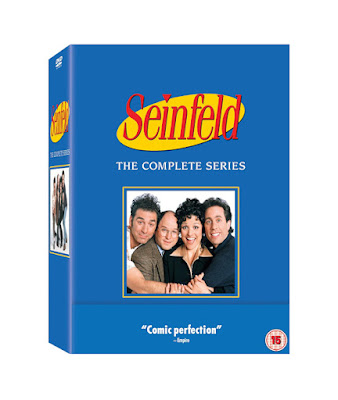“A locally-oriented music and information station for over 30s in the Solent and adjacent area” is the baldest of descriptions for Wave 105.2 FM, but this was the service it was licenced to broadcast, playing “a spread of adult contemporary and soft adult contemporary hits and treating speech as an important ingredient”. The licence was originally more specific on the music and features broadcast, including percentages to be met for speech content and “current hits”, but these were later relaxed.
What made Wave 105, “the South’s best variety of hits”, the most popular commercial radio station in its area – in the last quarter of December 2023, it received 405,000 listeners each week aged 15+, with a 13.9% share of listening, both figures more than twice that of BBC Radio Solent, which plays to an older audience – was the imagination used in how that licence was interpreted. All of its programmes came from its studio base in Fareham, Hampshire, made by friendly, engaging and long-serving presenters and staff, who both lived in, and are knowledgeable about, the area they serve. Listening one day, Steve Power, who presented the breakfast show on the station for nearly eighteen years, asked a listener what their day was like. They told him they had been on, of all things, a crisis management course, to which Power replied, “how do you think that went?” I may have interpreted a genuine question as a punchline, but I have remembered it ever since.
Its curated and varied playlist was wide enough to encompass shifts from 1960s and 70s songs to current chart hits and back again, along “Golden Hours” in the morning and evening which, as far as I’ve heard, reached as far back as 1959, and amongst the weekend evening disco and dance shows was “Teenage Kicks”, concentrating on the New Wave of the late 70s to early 80s, which must have inspired the similar “Stereo Underground" on BBC Radio Solent. And each daytime hour featuring at least two of a listener’s top five favourite songs, that listener being added to a monthly draw to win a holiday, a feature that lasted for the station’s entire history. Add in frequent and comprehensive news bulletins, travel news and features across its schedule, and Wave 105 made for the prime example of Independent Local Radio, providing a full service to the local area.
Another way of interpreting the same station licence is to provide the local news and information as opt-outs of a network that broadcasts a similar mix of music to other stations. This has already happened to the competitors that sat either side of Wave 105’s music mix: Ocean FM (classic hits) became Heart, and Power FM (current hits) became Galaxy, then Capital FM, most of its output relayed from London. A Media Bill currently making its way through Parliament will eventually do away with prescriptive licences altogether, in favour of reducing “red tape”, maintaining elements of “localness” and reducing weekday hours that must be made regionally from a minimum of three to zero.
On Wednesday 28th February 2024, station owners Bauer Radio announced that Wave 105’s frequency would soon start carrying Greatest Hits Radio – newer songs would eventually be dropped from the playlist, with listeners advised to tune to the sister Hits Radio network to hear those, and the earworm jingles that sang “Wave 105” descending G-F-E-C notes to sing the station name, something that never changed since first going on air on 14th June 1998, were replaced by reminders that “Greatest Hits Radio is the new name for Wave 105”. On the night of the announcement, the playlist told a different story: “Love’s Unkind”, “I Wanna Stay With You”, “You’re My Best Friend”, “You’ll Never Find Another Love Like Mine”, “Scandalous”, “Please Don’t Go”, “Even Better Than the Real Thing”, “Nothing Loves Forever”, “U Can’t Touch This”...
The hallmark of a great music radio station is the curation of its playlist, and under Andy Shier, its programme controller since 2008, Wave 105 proved that a playlist as wide as listeners’ tastes could work in practice, and even with presenters playing songs they felt fit the moment, hearing the playlist gain sentience in what became its last hours of broadcasting, on Thursday 28th March, became a truly moving experience, let alone switching on just after 7.00am to Chesney Hawkes’ “I Am the One and Only”: “You try to make me forget / Who I really am, don’t tell me I know best / I’m not the same as all the rest.” In the final minutes before 10pm, Wave 105’s male station voice, Rich Cope, opened the door to his Greatest Hits Radio counterpart, Rik Scott, before Cope said, “but, before I go, just two little things: good luck, Greatest Hits Radio, and take care of our lovely listeners, won’t you – they’ll be in safe hands”, before playing “Say Hello, Wave Goodbye” by Soft Cell, a wonderful song with a perfect title and spectacularly bitter lyrics.
With the sound of waves washing on the shore, one of the best radio stations I have ever heard had ended. I may try Greatest Hits Radio: Rick Jackson’s breakfast show continues, a unique concession for the network’s English stations, with Mark Collins moving to the same afternoon slot he had when he began at Wave 105, but whether these shows continue when radio licences are simplified is another question. However, Greatest Hits Radio was already available on DAB, if not FM, and I would already have been listening if that was what I wanted to hear. Perhaps Andy Shier could release his old playlists as a PDF download.
I had originally intended to write about the BBC preparing to launch its biggest-ever consultation on its future, including what role a public service broadcaster plays in public life, and how that should be funded. All the while, Wave 105, a commercial station that ultimately exists to make a profit, provided a service that served its local audience as good as expected from the BBC, if not better, but there was no longer a regulatory reason for it to exist, no matter how popular it was – for its owners, freed from red tape, relaying a national network was all the imagination they had.
The final two hours of Wave 105 had the following playlist:
Andrew Gold - Lonely Boy
Laura Branigan - Gloria
Phil Collins - Another Day in Paradise
Joan Jett & the Blackhearts - I Love Rock and Roll
ABBA - Dancing Queen
Destiny’s Child - Survivor
Tears for Fears - Change
Modern Romance - Best Years of Our Lives
Aswad - Baby I Love Your Way
Billy Joel - We Didn’t Start the Fire
UB40 - Food for Thought
Eagles - Lyin’ Eyes
Elton John - Healing Hands
Stevie Wonder – Signed, Sealed, Delivered I’m Yours
Level 42 - To Be With You Again
Sister Sledge - We Are Family
Village People - You Can’t Stop the Music
Gloria Gaynor - Never Can Say Goodbye
Lenny Kravitz - It Ain’t Over ‘Til It’s Over (ironically also the first song played on the station)
Soft Cell - Say Hello, Wave Goodbye








